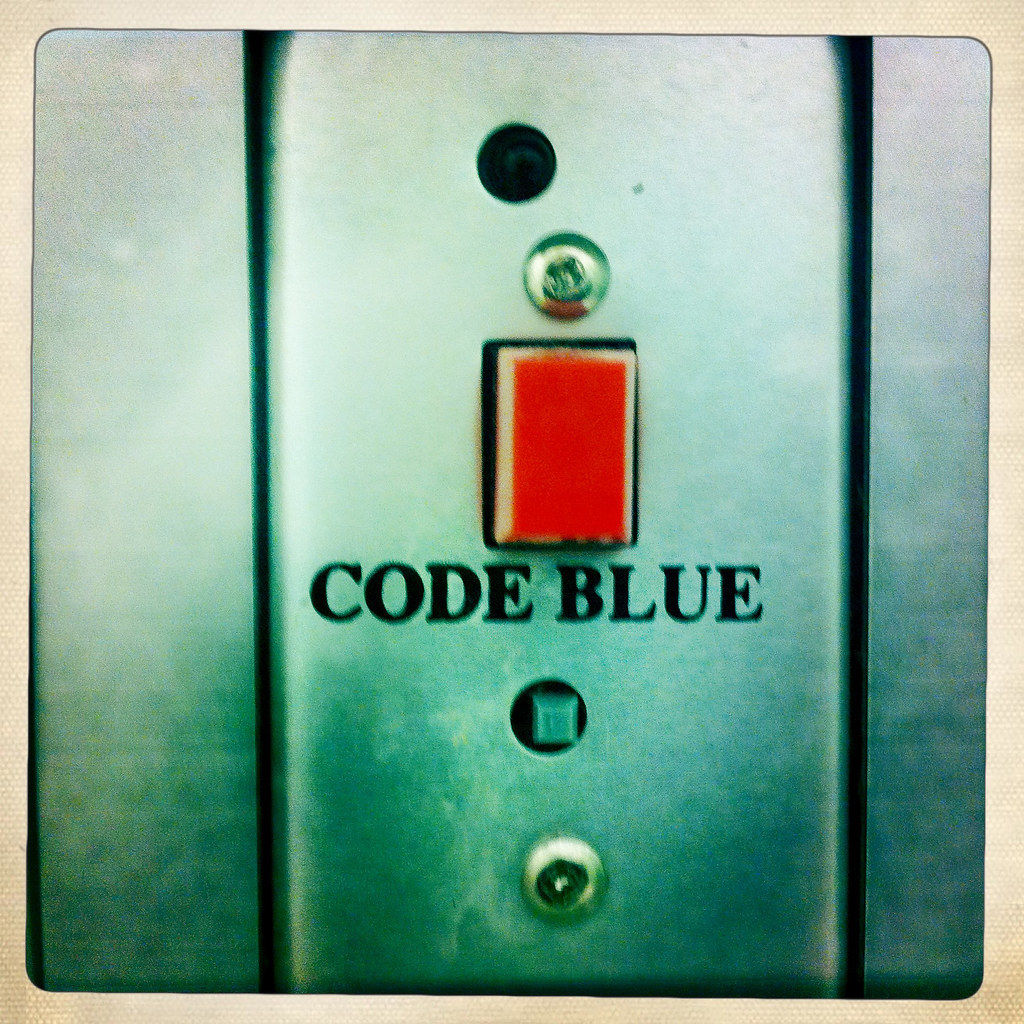“Code blue!” They teach it as an algorithm and a protocol. But what you are not taught are the emotions attached to a code.
I had just finished a cholecystectomy case on my surgery rotation and was walking by the medical intensive care unit when I heard “rapid response team, coronary care unit (CCU).” Since the CCU was not far and I am interested in emergency and critical care medicine, I decided to go to the code. When I arrived, I stood in the corner of a room as the only medical student observing the protocols.
The patient was a young woman in her thirties. From what I overheard, she had presented with chest pain only a few days prior and suddenly had a low ejection fraction with an abnormal rhythm. I could mostly just see her toes. They were painted with a glittery red Valentine’s-day-theme color. My heart sank.
They shock her once, twice, three … no, a total of seven times! No change in heart rhythm. The patient gets intubated and starts decompensating. I can see more of the patient now. She had urinated on herself. My heart sank again. The attending requested another defibrillator to double shock the patient. Multiple rounds of double shocks followed but no response.
What started as a rapid response was now a “code blue,” with the overhead pager repeating “code blue CCU, code blue CCU.” The team starts chest compressions and medication administration while a doctor goes outside to talk to the patient’s sister in the hallway. Everyone suddenly starts to hear the sister’s sobbing echoing in the hallway. It was as if time had slowed down just like in a movie. I found myself stuck in a moment I knew I would never forget as I watch about 20 people in the room shouting “magnesium,” “epi” and “clear” while the patient’s sister cried and other staff ran from one room to another to get medications.
After an hour of running the code and viewing the worried look on the face of the resident who was taking care of the patient with the attending, I hear, “It is time.” The resident goes outside to talk to the patient’s sister again. I follow him. He asks the sister if she wants the team to stop.
She screams while sobbing, “How could I possibly make that decision? How could I? You are the doctor. You call it!” My heart sank deeper into my chest.
How would I have felt if that was my loved one? How does the resident hold back his tears?
Finally, the time of death was called. A room full of people was now just a room with three nurses and a young woman lying on the bed … dead. Her children, 13- and 6-year olds, were now orphans. Her pretty nail polish is now being taken with her to the grave. I stepped out of the room. I looked to my left and two nurses were crying, and looked to my right and the resident was crying. I guess you do not always hold back your tears. Although we try to save patients and somehow dissociate from the unfortunate events, this is an inevitable and devastating part of medicine. Thus, it is important to recognize and talk about our emotions.
Today I left the room overwhelmed, lost and so blue, as many in the field of medicine will one day feel if they have not already. Maybe that is the reason they call the code blue. Experiencing grief and coming to an acceptance, in addition to supporting one another through these emotions, are what make us grow into better doctors. We are in this together! I learned that day that although it is important to express our feelings, it is also crucial to stay strong for patients and their families. After all, we are their support system. But we need to take care of our mental health as well to help others. We are allowed to feel sad and we should share stories such as this one.
Image credit: Jeremy Brooks is licensed under CC BY-NC-ND 2.0.


